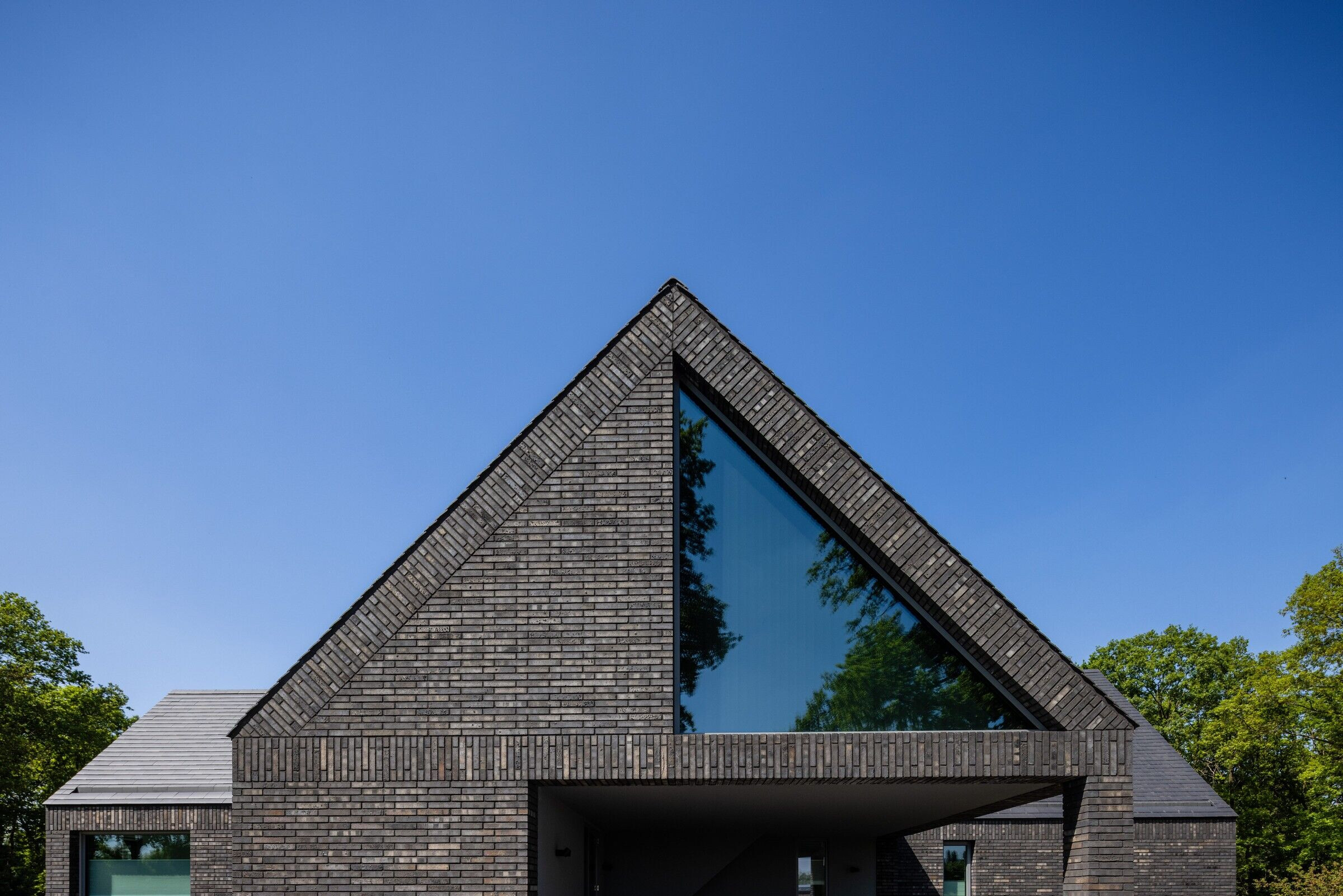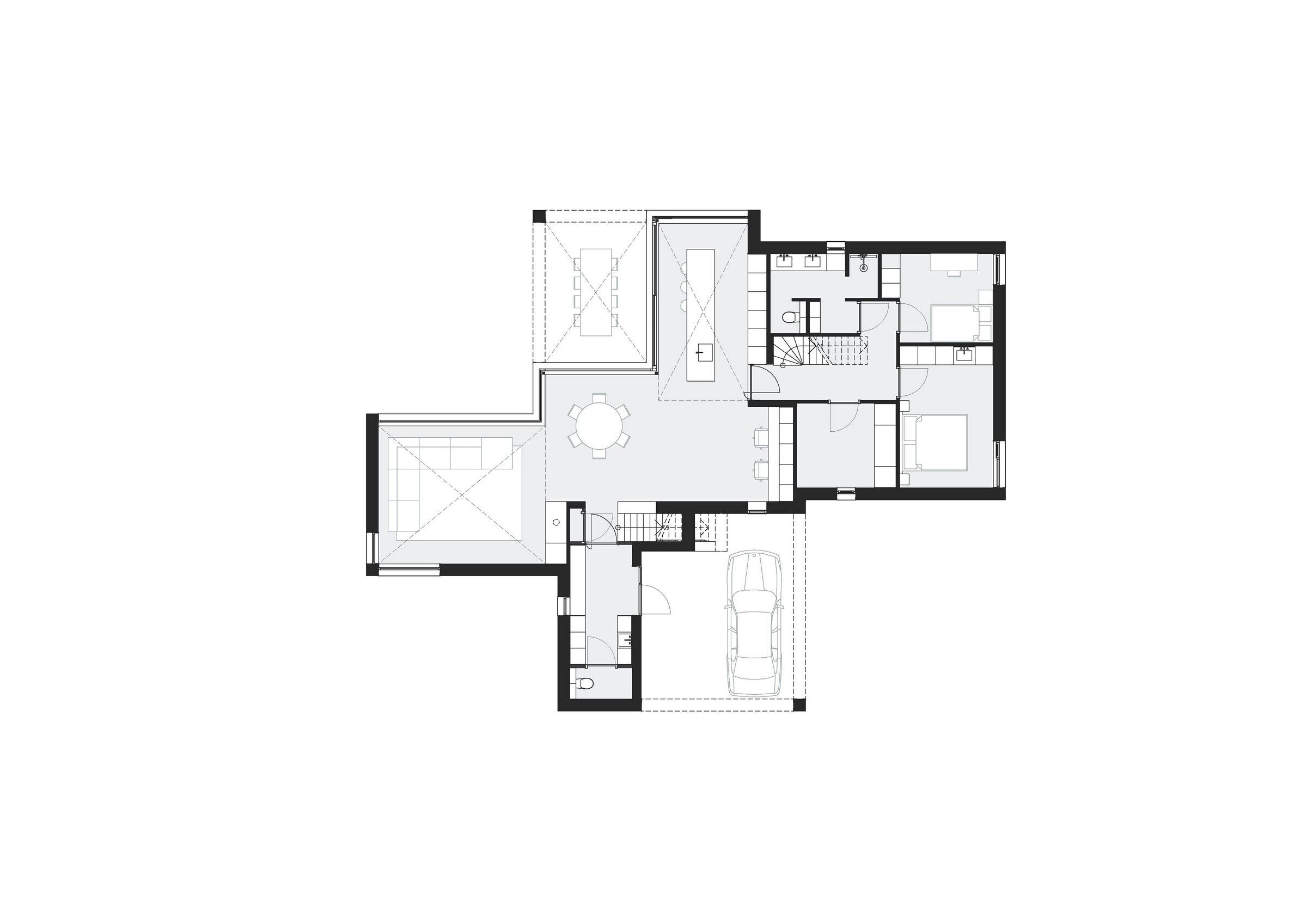'House with four roofs' is a new residential house on a former site of a car company in the countryside of the North Brabant village Boekel. The plot has a special location in the middle of structures of an old medieval agricultural area. The plot is enclosed by a small-scale forest on the one hand and on the other hand it has a view towards the vast landscape of the Peel. The house expresses in a new way constructing and living in the rural area of the Brabant Peel municipalities.


In the area with many large agricultural buildings, a small-scale configuration has been chosen in the mass of the house by composing four smaller archetypal volumes. By placing these volumes against each other in a cross shape, a central space is created with four wings, each with its own roof. Each wing has its own function and quality in relation to the surrounding countryside.


In the heart of the house, the intersection, is the central room with dining table and multimedia corner. This space is the entry point through which all areas in the house are accessed. You do not leave or enter the house without passing through this central space. On the west side of the intersection are the two wings with sitting room and kitchen. Together, these wings enclose the outdoor terrace towards the garden facing the evening sun. From the inside, the wings are characterized openness and transparency towards the garden. Voids, both inside and outside, provide a view towards the crowns of the trees. The entrance wing contains facilities such as a toilet and carport, but also has a staircase to the leisure room that is located under the roof structure of this wing. The triangular facade opening offers a view of the backdrop of the wide landscape at the front. The last wing, on the east side, sheltered and with morning sun, contains the bathroom, laundry room and all bedrooms.


The abstraction in the detailing and the expressive facade openings gives the house a monolithic appearance and reinforce the archetype shape. This makes the individual volumes readable from the outside. The plinth, roof edge and upper floor are framed by upright masonry. This creates a framework within closed masonry surfaces alternated with large facade openings that act as geometric canvases on the landscape. In terms of size and scale, the slim aluminium frames fully serve the carefully detailed masonry. The choice of brick, a coal sintered extruded brick, brings together the two characteristics of abstraction and craft in detail.


Team:
Architect: Denkkamer
Photography: Bas Gijselhart | BASE PHOTOGRAPHY











































